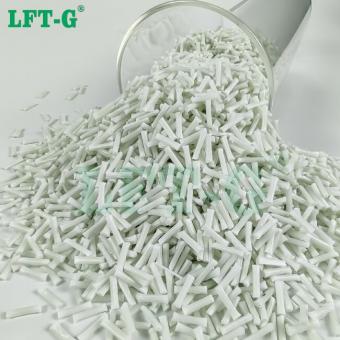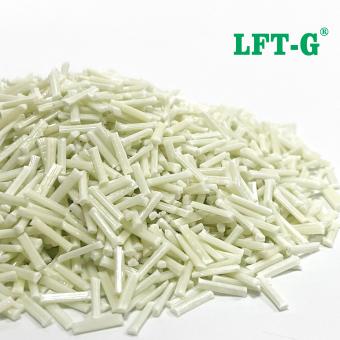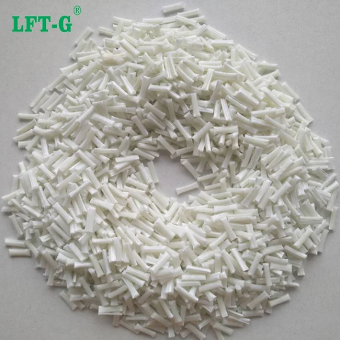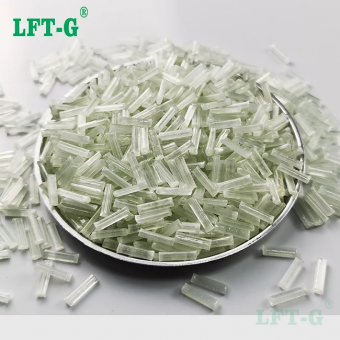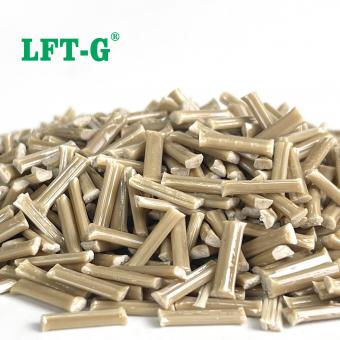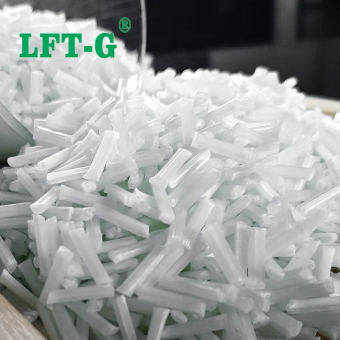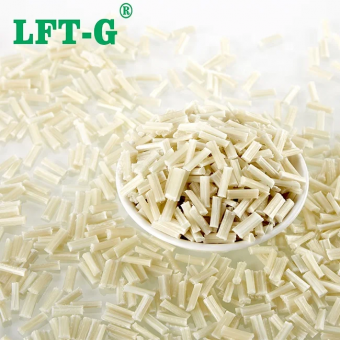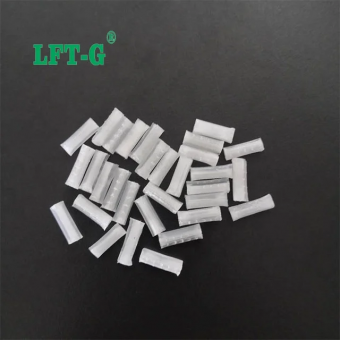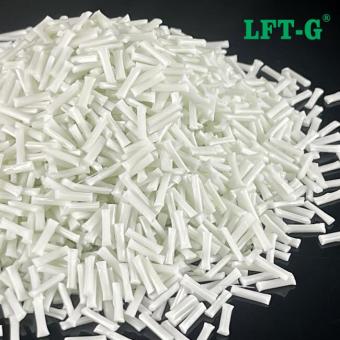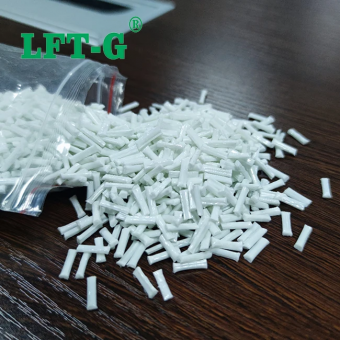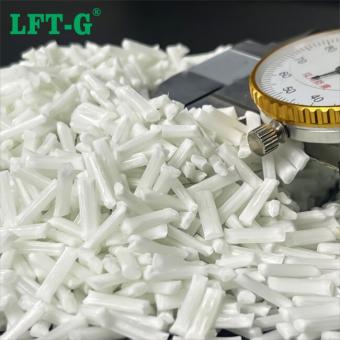-
High Performance PLA with Filler for Injection MoldingOur long glass fiber reinforced PLA (Polyactic Acid) is an advanced bio-based composite material designed for injection molding applications. This material combines the sustainability of PLA with the superior mechanical properties of long glass fiber reinforcement, offering enhanced strength, stiffness, impact resistance, and dimensional stability
- virgin pellet
- recycled pla
- lft kft
- china plastic supplier
- modified pla plastic
- plastic raw materials
Tags :
-
High Strength Excellent Impact Resistance HDPE Long Glass Fiber Enhanced MaterialHDPE (High-Density Polyethylene) long glass fiber reinforced material utilizes advanced long glass fiber technology to significantly enhance mechanical properties while maintaining the lightweight nature of HDPE. Compared to conventional HDPE, this material offers higher rigidity, strength, and impact resistance while retaining excellent chemical resistance and weatherability.
- pe plastic resin
- pe pipe
- high density PE
- glass fiber filled PE
- Enhanced plastic pellets
- China plastic factory
Tags :
-
High Temperature Resistant Nylon PPA with Filler Injection MoldingOur high-performance PPA (polyphthalamide) long glass fiber reinforced composite is engineered to deliver exceptional mechanical strength, thermal stability, and durability. Designed for demanding applications, this composite material offers a superior balance of stiffness, impact resistance, and processability. Ideal for automotive, electrical, and industrial applications, it sets a new benchmark in high-performance thermoplastic composites.
- ppa plastic price
- ppa gf30
- ppa plastic resin
- ppa compound
- ppa gf30 material properties
- China factory plastic supplier
Tags :
-
High Strength ABS with Filler Glass Fiber for Injection MoldingOur high performance ABS long glass fiber reinforced composite combines the proven versatility and aesthetic qualities of ABS resin with the superior mechanical strength of long glass fibers. This advanced material is engineered to offer enhanced stiffness, improved impact resistance, and excellent thermal stability, making it the ideal choice for high-end automotive, electrical, and consumer applications.view more
-
High Strength TPU with Filler Glass Fiber for Shoe solesOur TPU (Thermoplastic Polyurethane) Long Glass Fiber Reinforced Compound combines the outstanding flexibility and impact resistance of TPU with the superior mechanical strength of long glass fibers. Designed for industries requiring high-performance materials, such as automotive, electronics, and industrial applications, this compound offers enhanced durability, dimensional stability, and excellent wear resistance.
- tpu granules
- tpu automotive industry
- tpu pellets for injection molding
- tpu toe cap
- tpu polymer
- tpu plastic pellets
Tags :
-
Advanced Engineering Plastic PPS with Filler Glass Fiber PelletsPPS (Polyphenylene Sulfide) Long Glass Fiber Reinforced Compound is a high-performance engineering plastic known for its exceptional mechanical strength, thermal stability, and chemical resistance. Reinforced with long glass fibers, this material exhibits superior dimensional stability, creep resistance, and durability, making it an ideal choice for demanding applications in various industries.
- Polyphenylene Sulfide plastic pellets
- pps thermoplastic
- pps polymer melting temperature
- China supplier PPS GF
- LFT materials replacing metal
- 2025 new materials plastic
Tags :
-
LFT High Impact Resistance Polypropylene Glass Fiber Reinforced PlasticOur homopolymer polypropylene (PP) long glass fiber reinforced composite is an advanced engineering material designed to provide superior mechanical properties, making it an ideal choice for high-performance industrial applications. By incorporating long glass fibers, this composite significantly enhances tensile strength, impact resistance, and dimensional stability compared to traditional PP materials.
- polypropylene cons
- thermoplastic composites examples
- wholesale glass fiber
- thermoplastic composites applications
- propylene price 2025
- pp copo
Tags :
-
High-Performance PA66 Long Glass Fiber Reinforced CompoundPA66 (Polyamide 66) long glass fiber reinforced thermoplastic is a high-performance material widely used in demanding applications across various industries. It offers exceptional strength, thermal stability, and chemical resistance, making it a preferred choice for structural and load-bearing components.
- Reinforced PA66 plastic
- High-performance PA66 composite
- PA66 injection molding material
- Engineering thermoplastics supplier
- Automotive plastic parts material
- Structural plastic replacement for metal
Tags :
-
LFT Nylon Polyamide 12 Long Glass Fiber Reinforced CompoundsPA 12 (also known as Nylon 12) is a good general-use plastic with broad additive applications and is known for its toughness, tensile strength, impact strength and ability to flex without fracture. PA 12 has long been used by injection molders due to these mechanical properties. If you’re considering converting metal parts to plastic, PA12 will be a good choice.
- PA12 PA filler GFRP 40 30 20
- pa12-gf30 polymaker application
- Thermoplastic resin made in China
- Nylon filament polymer resin pellets
- EDM wholesale on stock PA12 materials
- Best price PA12 for engineering
Tags :
-
Xiamen LFT Nylon Polyamide 6 excellent heat resistant properties Long glass fiber Filled PelletsPolyamides are high-performing polymers that have great strength and wear resistance when compared to other polymers.
- LFT Long fibre glass reinforced thermoplastic resin
- Polyamide 6 PA plastic
- High strength for car parts auto
- raw materials made in China good price
- high-performing polymer
- washing machine drum parts good appearance
Tags :
-
LFT-G fiber filled PBT composites high strength injection moldingOur long glass fiber reinforced PBT compounds offer high strength and excellent chemical compatibility, making them ideal for industrial applications where durability and performance are critical.
- chemical compatibility PBT
- long glass fiber filler polymer
- natural color pbt supplier
- PBT application reinforced materials
- compounds resin high strength
- Long fiber PBT for industrial use
Tags :
-
ProFiber Long Glass Fiber Reinforced PP – High-Performance Homopolymer for Injection MoldingOur Glass Fiber Reinforced Polymer with High-Performance offers exceptional strength and durability, perfect for injection molding PP applications.
- Glass Fiber Reinforced Polymer
- High-Performance PP Material
- Injection Molding PP
- Copolymer Plastic Material
- Reinforced Thermoplastic
- Durable Plastic for Automotive
Tags :

 e-mail
e-mail English
English français
français Deutsch
Deutsch русский
русский italiano
italiano español
español português
português العربية
العربية 日本語
日本語 한국의
한국의 中文
中文













